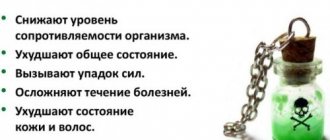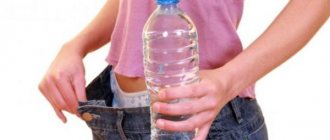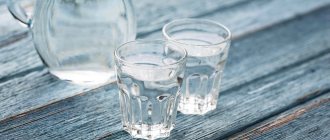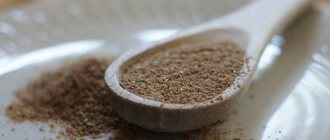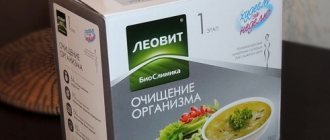Why is he so important
Many experts consider breaking out of fasting to be one of its stages, without which the technique will not work. If it is not organized correctly, you can pay for it not only with your health, but also with your life. Unfortunately, there are cases where neglect of recommendations resulted in death. Therefore, it is so important to devote as much attention and time as possible to the recovery period.
What are its main functions:
- help the body adapt from internal sources of nutrition to external ones;
- ensure a gradual transition to a normal diet;
- remove toxins freely circulating in the body;
- start the digestive tract;
- restore the normal functioning of all organs without risk to health;
- mitigate the next stress for the body;
- minimize side effects and complications.
When recovering from fasting, important health processes occur in the body that you need to be able to control.
With the very first sip of juice (it is with this drink that it is usually recommended to start your exit) you will feel truly brutal hunger. During abstinence from food, it becomes dulled, as the body gets used to making do with internal reserves and the stomach stops sending appropriate signals to the brain. But as soon as the receptors sense the taste of food, the digestive system awakens and turns you into an insatiable giant who wants to eat everything that is in sight. Therefore, the first task of the recovery period is to tame this inner glutton.
After fasting, there are still poisons in the blood and tissues, and in considerable quantities. Many people wonder how this is possible: isn’t the goal of abstinence to cleanse the body of all these toxins? Yes, most of them are excreted, but the formation of breakdown products during metabolic processes occurs continuously. At the moment when you complete your test, some harmful substances that have already been released from the cell are circulating either in the intercellular space, or in the blood, or in the lymph. They are already ready to leave the body, but do not have time to do this, since the hunger strike is over.
If the exit is not organized correctly, all these poisons will return back into the cells and spread through the blood to the organs. It turns out that the effect of fasting will be neutralized. But this is not the worst thing. If during the recovery period you eat prohibited foods or allow yourself an extra piece, many additional harmful substances will enter the body with food. An empty stomach will immediately release them into the blood, which can cause severe intoxication. Hence the cases of death.
This means that the second main task of the exit is to remove freely circulating toxins, poisons and other toxic debris remaining from the body after fasting and prevent new ones from entering it.
What is fasting
This is a healing practice that forces the human body, under the influence of stress, to cleanse itself and start the processes of resorption of tumors and polyps. It belongs to alternative medicine, although the clinical effectiveness of the method has been confirmed by doctors. A person using this type of diet refuses to eat for a certain period of time. During this time, changes occur in the body:
| Duration of hunger strike (days) | Positive changes |
| 1-3 | Appetite increases, the nervous system goes into a state of stress, digestion is rebooted, toxins are removed from the blood |
| 3-7 | Cleansing the intercellular substance from pus, impurities, degeneration of intestinal epithelial tissue |
| 7-14 | Relieving the heart, nervous system, cleansing the cells of the liver, intestines, stomach, activating the resorption of polyps and tumors |
| 14-21 | Salts and mucus are removed, the functioning of the kidneys and liver is normalized, and the renewal of cells in the gastrointestinal tract ends. |
When to go out
Usually everyone is interested in how to properly break fast, but rarely does anyone ask when exactly this should be done. The reason for this ignorance is clear. If a person chose a 7-day method, it means that on the 8th day you can already eat. However, not everything is so simple and unambiguous.
Few of the authors of fasting methods warn their followers about the conditionality of its duration. When determining the duration, they focus on average indicators. According to them, the acidotic crisis occurs on days 7-8, and they build on these numbers. But they are individual for everyone. For some, a fracture begins already on the 5th day, while others wait for it for 10-11 days.
In addition, there is a stereotype of human thinking regarding the time periods in which we live: one week, two, three, a month, 40 days. There are no methods designed for, for example, 17 or 33 days. And all these rounded terms do not in any way reflect the cycles by which each individual organism lives!
In this regard, you just need to focus on the periods indicated in the fasting methods, but at the same time listen sensitively to the body. He is the one who will tell you when to go out. If you miss this moment, there will be no effect, but complications are guaranteed to begin.
You need to stop fasting when:
- you felt hungry and wanted to eat, although over the past days such a desire has not arisen;
- you began to lose more than 0.5 kg per day (this “works” with long-term fasting);
- you are tired of starving, you have stopped feeling pleasure from the process;
- breath becomes fresh and clean;
- the sclera of the eyes is cleared of turbidity;
- the coating on the tongue disappears;
- The discharge no longer gives off an unpleasant odor, and the urine becomes lighter.
If the exit is organized for these reasons, the fast is considered fully completed. However, in some cases it has to be stopped urgently because the state of health deteriorates sharply. This is evidenced by specific and pronounced signs:
- severe ketoacidosis;
- daily fainting;
- persistent, uncontrolled tachycardia (more than 120 beats per minute);
- attacks of hepatic or renal colic;
- vomiting blood;
- severe pain in any organ;
- your health has deteriorated to such an extent that you have not had the strength to get out of bed for 2 days.
If the exit was organized urgently, the fast is considered unfinished. In this regard, it is hardly worth counting on the results that were originally planned to be obtained. In addition, in such emergency situations, the first thing to do is to seek professional help from a doctor and follow all his recommendations.
The essence of a three-day fast
Fasting is an extreme but effective way to cleanse the body. It should not be confused with diets. Dietary restrictions or concentration on one product do not bring results, and sometimes harm the body. Complete voluntary refusal of food is a guaranteed launch of the complex cleansing mechanism. As a result, a person feels much better, and weight gradually decreases.
One-day fasting is ineffective, since the consumption of internal resources begins 60 hours after the last intake of food into the body. It is after this amount of time that active fat burning and protein breakdown occurs. Fasting for 3 days guarantees results and is much easier to tolerate. It involves voluntary refusal of food for several days using a special technique.
Interesting fact. In just 3 days you can easily lose 3 to 6 kilograms. The result depends on the initial state of the fasting person and his weight.
How many days does it last
The duration of the exit depends on the timing of the fast itself. But even on this issue, experts do not have a clear opinion. For example, Arnold De Vries (USA) recommends the following scheme:
- with a fast lasting 1-3 days, the yield may be only 1 day;
- 4-8 - 2 days;
- 9-15 - 3 days;
- 16-24 - 4 days;
- 25-35 - 5 days;
- more than 35 - 6 days.
Most researchers criticize De Vries's scheme, saying that a six-day recovery from a long fast is too short a period for a recovery period. Therefore, there are other options:
- The exit should last exactly as long as the fast itself.
- It should be half as long.
- It should be twice as long.
The best option, according to most, is the latter. It allows you to allocate enough time both for juice therapy and for the gradual introduction of solid foods into the menu. During other periods, you may simply not have time to do this.
There is another technique for determining how long the exit should last:
- on a juice diet (first phase), you need to sit until the feeling of bitterness in your mouth, which will be felt after every sip, goes away;
- on liquid food (second phase) - until the functioning of the gastrointestinal tract normalizes (discomfort, bloating, pain in the stomach area disappear);
- on a vegetarian diet (third phase) - until you get tired of it.
As most authors of various methods note, you can remain in the third phase of recovery for the rest of your life: it is good for health and for losing weight, and it will also replace the preparatory stage for the next fast.
Exit from fasting 1 day.
When fasting for 1-2 days, significant changes in the body’s functioning do not occur. Therefore, mistakes during restorative nutrition are not so dangerous. You can start out with a regular cabbage salad with carrots. In the afternoon - stewed vegetables and tea. In the future, you can return to your normal diet, but it is best to spend another one or two days on a purely plant-based diet using salads, stewed vegetables, juices, and lactic acid products. /see also: way out of dry fasting 1 day/
Basic recommendations
To organize the correct way out of fasting, you need to adhere to the following recommendations.
- Organize fractional meals
- Expand your diet with new products gradually.
- Drink at least 2 liters of water per day.
- Try to rest during the day (sleep or just lie down) for at least 2 hours.
- Lead a healthy lifestyle: get enough sleep, avoid stress, breathe fresh air, move more.
- If any side effects or complications occur, do not attempt self-medication, but seek medical help.
The rules for the recovery period after fasting are in many ways similar to exiting weight loss diets. The more accurately you follow them, the faster the body will adjust to its previous diet without harm to health.
Benefits of fasting
A fasting diet for 3 days has a positive effect on the body. The result of this extreme unloading is:
- Effective removal of metabolic products.
- Strengthening the immune system - treating serious diseases or alleviating pathologies.
- Renewal of intestinal microflora.
- Restoration of the pituitary gland.
- Increasing the tone of life.
- Weight loss.
Many doctors do not recommend fasting because the results are often unpredictable. But supporters of alternative medicine are confident in the effectiveness of three-day fasting. The main conditions are consistency of actions and compliance with recommendations.
Nutrition
Authorized products
Prohibited Products
- Meat and all its derivatives;
- fish, seafood;
- dairy products (although Malakhov suggests starting with sour milk);
- salt, sugar;
- bakery, pasta, confectionery products;
- sweets;
- legumes, cabbage, carrots, beets, onions, garlic;
- bananas;
- vegetable oils.
Phases
The first phase is juice therapy:
- For the first 2-3 days, drink freshly squeezed fruit juices diluted half with water.
- In the next 2-3 days you can drink them without dilution.
- On days 5-7 - with the addition of pulp.
- Drink through a straw, in small sips.
- Daily norm: on the first day - no more than 2 glasses, and then each subsequent day add 1 glass.
- Sugar, salt and other additives are prohibited.
The second phase is pureed and liquid dishes:
- Vegetable broths without adding salt and spices.
- Fruit, vegetable and green smoothies
- Liquid porridge on water.
- Puree fruits, vegetables, herbs.
- Nut milk.
- In order not to gain weight (it usually begins to gain during this phase), increase your daily caloric intake gradually (+ 100 kcal daily).
The third phase is the transition to solid food:
- The ideal product for the first days of this phase is watermelon.
- Also good are grapefruits, oranges, grapes, green apples, red plums, mangoes, pineapple and papaya.
- Eat sprouted wheat grains, as well as green young shoots of healthy herbs (clover, alfalfa).
- Only after a week can you try peaches, apricots, cucumbers and bell peppers.
- Legumes are undesirable in any form (even sprouted).
- You can put it in soups and vegetables, and cook porridges thicker. They should be warm at first, but gradually bring them to a hot state.
- Dried fruits are allowed only if they are well washed and soaked (at least 6-8 hours in warm water).
People often ask whether tomatoes and bananas can be included in the menu when recovering from fasting. Tomatoes - only in the middle of the third phase, along with the introduction of cucumbers and peppers. You can’t do it right away, as they contain too many acids. Although there are authors (Suvorin, Malakhov) who recommend eating them from the very beginning. Due to their viscous structure and excessive sweetness, it is better to try bananas as late as possible.
It is debatable whether it is possible to end a fast on nuts. Not all authors of methods allow this, since they contain too much fat, which is undesirable to include in the diet during the recovery period. If only during the third phase you include them in small quantities in crushed form in porridges and cocktails. But you definitely shouldn’t get carried away.
Selected recommendations
- Don't overeat.
- Eat while sitting (food is better absorbed this way).
- Swallow food little by little, chewing thoroughly. Rushing while eating is strictly prohibited.
- Make a meal schedule and strictly follow it.
- Avoid combined, multi-ingredient dishes.
Sample menu
Breaking fast for 7 days
Diet of the recovery period (option No. 1, on juices) after a fasting period for a period of 7 days. 1 day - during the day, drink juice diluted with water (1:1), with a total amount of 0.7-1.2 liters. The concentration of juice increases towards the end of the day; you can drink water between meals. Day 2 - before lunch, pure juice - 2-3 doses, after lunch - fruits or vegetables, preferably grated. Day 3 - vegetables, fruits. Porridge with water, bread, dried fruits are introduced. Day 4 - boiled vegetables, fruits, vegetarian soups, sunflower oil are added to the menu. Day 5 - add fermented milk products (kefir, fermented baked milk, etc.), and butter in small quantities. Day 6 - cheese, sour cream, and salt are added to the diet. Day 7 - add eggs and cottage cheese. After the 7th day of the recovery period, foods high in protein are gradually introduced into the diet, first fish, legumes, then poultry, meat. Option for a recovery diet after a 7-day fasting period (mixed option). The recovery from hunger lasts 7 days. Meal times are approximate and may shift in one direction or another, depending on the patient’s regimen. 1st day. 9 o'clock. Oatmeal jelly at the rate of 1 tbsp. l. rolled oats, domestically produced without food additives per 1 glass of water. Cook over low heat for 10-15 minutes. 12 hours. Repeated intake of jelly. 15 hours. Taking 50% juice, preferably freshly prepared from green apples or oranges or carrots or cabbage or tomatoes. Tomatoes can be used only in season and in the absence of diseases of the joints and spine. In case of increased gastric secretion, which is usually accompanied by heartburn, the juice should be diluted 4 times. It is acceptable to use store-bought juices in the same range, as well as baby food juices that do not contain sugar or salt. 18 hours. Repeated intake of 50% juice. 21 o'clock 0.5 cups 50% juice. 2nd day. Taking the same juices, but already 75%. For diseases of the gastrointestinal tract, alternate 50% juice with oatmeal jelly. 3rd day. 9 o'clock. If there is no stool, take 6-7 prunes brewed with boiling water 2 hours before taking. When intestinal function is restored, instead of prunes, take grated carrots with 1 tbsp. 10% sour cream. 12 hours. One of the following fruits: green apple or orange or 2 tangerines or 1 cup of seasonal berries. 15 hours. 75% juice. 18 hours. Salad of cucumbers, lettuce, parsley and dill. You can season the salad with 1 tsp. any vegetable oil 21 hours. 0.5 cups of liquid with dried fruits of your choice: 1 tbsp. raisins or 2 pcs. dried apricots or 2 pcs. prunes On subsequent days at 21:00 the recommendations are the same. 4th day. 9 o'clock. Fat-free or low-fat liquid fermented milk product, preferably with “bio” cultures: 1% “bio” kefir, low-fat yogurt. 12 hours. If intestinal function has returned to normal during this period, we recommend preparing a vinaigrette: beets, carrots, 1 tablespoon of sauerkraut, a small amount of potatoes, dill, parsley, green peas, 1 tbsp. vegetable oil. In the absence of stool - “Broom” salad: fresh, grated carrots and beets, one part each, and three parts of finely chopped fresh cabbage, a quarter of a green apple and 1 tbsp. vegetable oil. Increase the volume of the salad to 2 glasses. 15 hours. Fruits. See above. 18 hours. Salad. See Day 3. 5th day. 9 o'clock. 100 grams of dietary cottage cheese. 12 hours. Buckwheat porridge without adding milk or butter. 15 hours. Salad see 3rd day. 18 hours. 100 g of grated cheese, white varieties, low fat such as “Adyghe” or soaked feta cheese or homemade cheese. Add up to 1 cup of finely chopped greens. 6th day. 9 o'clock. One soft-boiled egg with herbs. For fibroids, replace the egg with dietary cottage cheese. 12 hours. Fruits. 15 hours. Any vegetables, except potatoes, boiled or stewed. You can use frozen mixed vegetables to make vegetarian soup. 18 hours. 100 g of low-fat fish, calorie content not exceeding 40-50 kcal. Any cooking method except frying. Combine with green salad. 7th day. 9 o'clock. Liquid fermented milk product in the form of yogurt or 1% kefir. 12 hours. Salad. See Day 3. 15 hours. 100 g chicken meat without fat and skin. Any cooking method except frying. Green salad. 18 hours. Fruits. See Day 3.
Exit from fasting according to Bragg.
How to stop a 7-day fast! /P.Breg/ When you do a 7-day fast, your stomach and intestines contract greatly. About 5 hours on the 7th day, peel 4-5 medium-sized tomatoes, cut them and put them in boiling water. Once they are cool enough to eat, eat as much as you want. On the morning of the 8th day, prepare a salad of grated carrots and grated cabbage, seasoned with orange juice. After this salad, you can eat a cup of stewed greens and peeled tomatoes (spinach, artichokes, herbs, mustard). Bring the greens to a boil and remove from heat. For this purpose, you can eat 2 pieces of bread, which you pre-dry so that it is dry and turns into powder in your hands. This is food for the morning, and during the day you can drink as much distilled water as you like. For lunch, grated carrots, chopped celery, cabbage, seasoned with orange juice. 2 types of any cooked vegetables can be added: spinach, artichokes, mustard greens, carrots, cabbage, boiled celery, pumpkin with two slices of bread, but all this without any oil. On the 9th day, you can have breakfast with any kind of fresh fruits and vegetables with the addition of freshly sprouted grains and sweeten, if you wish, with no more than one tablespoon of honey. During the day, eat a salad of grated carrots, cabbage, celery with one boiled vegetable plus a piece of dry bread. For lunch you can eat a salad of lettuce, burdock, parsley, tomatoes and 2 boiled vegetables.
Breaking fast for 10 days
HOW TO STOP A 10-DAY FASTING! /P.Breg/ There is a slight difference between a 7 and 10 day fast. On the 10th day of fasting, you can eat stewed tomatoes for about 5 hours, and then follow the same system given for the 7th day. It is very important not to eat more than you want. Remember that you have been without food and you have lost your craving for food, and it will take time for the body to move from a detoxification program to a satiation program.
Breaking fast for 21 days
Approximate scheme of a restorative diet after 17-20 days of fasting /according to Voitovich/. 1 day of nutrition - mix one liter of non-canned juice and 0.5 liters of water. It is advisable to make carrot or apple juice, but you can consume any other juice; vegetable, fruit, berry. During the first five days of restoring the diet, salt consumption is strictly prohibited. Day 2 of nutrition: (4–5 times a day) vegetables, fruits, berries until the first moment of feeling full. Vegetables are mainly consumed raw. A large amount of garlic (10–15 grams) must be consumed with food (some authors believe that garlic should not be consumed for at least 2 weeks after fasting), regardless of individual tolerance to it before treatment with this method. You can boil the beets and bake the potatoes in the oven towards the end of the second day of resuming food intake. Day 3 of nutrition: dried fruits, mainly soaked in warm water, as well as two tablespoons of honey are added to vegetables, fruits, juices. Day 4: food intake is reduced to 3-4 times a day. Porridge from various cereals is added: buckwheat, oats, millet, pearl barley, and so on. It is prepared in water and seasoned with vegetable oil. By the end of 4 days you can eat nuts and seeds. Day 5: legumes are added - peas, beans, or in the form of porridge. Day 6: Bread containing salt is added. After which you can switch to three meals a day according to the principle of the American naturopath Herbert Shelton - more monotonous food at one time and the greatest variety of it throughout the day, week, month, etc. An approximate scheme for breaking fast for a period of 21 days /according to Nikolaev/. 1. Juices (carrot, grape, apple) on the 1st day are consumed diluted in half with water; in the 2nd - undiluted; 4-5th day - fruits and carrots - pureed; on the 6-7th day - cereal porridge - buckwheat, millet, rice, "rolled oats" (it is recommended to chew them thoroughly and for a very long time). 2. The juice should be drunk in small sips; “chew” it, savor it, mixing it with saliva, which is very important. 3. The diet from the 10th to the 30th day can be varied depending on the availability of products, adhering to a vegetable and dairy diet with a maximum content of vitamins and mineral salts. 4. If fresh fruits and vegetables are unavailable, they can be replaced with an appropriate amount of canned or dried ones, but they must be chewed even more thoroughly. It is advisable to increase your walks in the fresh air. 5. Instead of kefir, it is permissible to consume any lactic acid products. 6. Ingredients of the vinaigrette per 500 g portion (divided into two equal parts): boiled potatoes - 250 g, raw grated carrots - 100 g, boiled beets - 80 g, raw cabbage - 50 g, vegetable oil - 15 g, onions - 5 g. You can add a teaspoon of lemon juice to the vinaigrette.
Exit from a 20-day fast according to G. Shelton
At the end of the fast for one day, I give half a glass of juice every hour. I prefer to start giving juice at 8 am and stop at 6 pm. Obviously, this can only be done in cases where the resumption of nutrition occurred before the onset of hunger. If your appetite returns, fasting should be interrupted at any time of the day. On day 2, I give the patient a glass of juice every 2 hours. In general, this is the same amount of juice as on day 1, but it is given at a time in large quantities and at large intervals. Sometimes it turns out that this amount is too much. If a starving person complains that he does not want as much, he is allowed to skip one or two meal periods. There is no amount of food that he must eat during this period. On the 3rd day I give an orange for breakfast, 2 for lunch and 3 in the evening. Instead of oranges, you can give an appropriate amount of grapefruit, fresh ripe tomatoes or other juicy fruits depending on the season. It is not so important what to feed as it is important not to overfeed. These fruits should be fresh, ripe and well chewed. Any tendency to swallow food greedily must be suppressed. On the 4th day, the patient receives a small breakfast of citrus fruits or one or two fresh fruits or melon, depending on the season. In the afternoon - a vegetable salad without salt, oil, vinegar, lemon juice and other seasonings and one non-starchy vegetable, steamed. In the evening - again some fruit. This food should be light, but the quantity is slightly larger than for breakfast. On the 5th day - fruit breakfast again. In the afternoon - salad, 2 boiled green vegetables and baked potatoes or protein (a little). In the evening - fruit food. I allow non-vegetarians to drink a glass of curdled milk made from unpasteurized milk at dinner. On the 6th day, food may remain the same, only its quantity increases slightly. By the end of the first week, the fasting person should receive a normal amount of food. It is not allowed to snack between meals and eat in the evening before going to bed. The post-fasting nutrition plan includes three simple meals a day, consisting of fresh vegetables and fruits. If later there is an individual desire to switch to a two-time or one-time dose, this will be the best solution after stabilizing the weight.
Remember! Breaking from fasting is the most important part of fasting practice. Therefore, take your time, be restrained and you will succeed. But in principle, you can break fast on any food - even bread and meat. You just need to start consuming them in a minimal amount, chewing them thoroughly and bringing them to a liquid state in your mouth, gradually increasing the amount eaten. But you will still get the greatest benefit from fasting from eating plant foods. Although there are scientifically based methods for obtaining very exotic products. In particular, for Mongolia, taking into account national characteristics, a method of eating with lamb broth and green tea was developed - ABOUT THE THERAPEUTIC IMPORTANCE OF THE MODIFIED DIET OF THE RECOVERY PERIOD RDT, ADAPTED TO THE NUTRITIONAL FEATURES OF THE POPULATION OF THE Mongolian People's Republic
Options
Exit from fasting can be organized on the basis of a single product (something like a mono-diet), taking into account a certain property of it.
On oatmeal
- During the first days, instead of juices, you can drink oat cocktail in limited portions, which has excellent cleansing properties.
- Then start preparing liquid oatmeal using water, but without adding salt, sugar or even fruits and berries. Eat 6-7 times a day, 3-4 tbsp. l.
- By the end of the release week, you can start adding bran, pieces of permitted fruits and berries to your oatmeal, prepare slimy oatmeal soup for lunch, and drink fruit and berry smoothies with the addition of this grain.
- In the first days, it is better to take well-ground flakes, and then gradually switch to whole grains.
Exit with watermelon
- It is organized only if the end of fasting occurs in August-September.
- Recommended for those whose fasting was difficult due to severe intoxication. Watermelon with its strong diuretic effect will eliminate poisons circulating freely in the body.
- There is a contraindication: kidney or liver problems.
- The first 2-3 days - watermelon juice, half diluted with water. No more than 2 glasses per day.
- Another 2-3 days - juice in concentrated form and increasing the volume to 4 glasses.
- Then eat the watermelon itself (+ juice) every day, gradually increasing the portion size.
- Release time: no more than 1.5 weeks.
Berries at the end of fasting
- Allowed only if the exit occurred during the berry season.
- It is recommended to use strawberries, raspberries, cranberries, currants, gooseberries, sea buckthorn, rose hips, lingonberries, and blueberries for this purpose.
- How to properly prepare berries: rinse, crush, pour warm water overnight, strain the next morning. In the first 2-3 days, drink only this berry water.
- Then you can eat the berries themselves, crushed and swollen in water.
- By the end of the week, you can make fruit drinks, juices from them and eat them fresh.
- It is advisable to eat 1-2 tsp daily along the way. bran, otherwise berry acids will harm digestion.
Such options are good because they allow you to choose a product that you like or whose properties you simply need at the recovery stage.
For pancreatitis
Therapeutic fasting for pancreatitis requires a special solution:
- 1 day - only vegetable broth.
- 2 - vegetable liquid soup.
- 3-4 - slimy cereal soups and porridges.
- 5-6 - dried bread, bran, low-fat cottage cheese, kefir.
- 7-8 - fish, eggs, meat, baked apples, compotes, berry jelly.
After 2 weeks, it is recommended to go on a protein diet for a while.
Exiting therapeutic fasting in the presence of such serious diseases as pancreatitis should be carried out under the constant supervision of doctors.
How to break a water fast correctly
It is logical to ask: what is the correct way to end a water fast? The scheme is no different from dry fasting, it’s just that the way out will start not with water, but with juice. Vegetable juices are best.
After a person has already become accustomed to a 36-hour fast, if desired, you can move on to the next step and refuse food for seven days. Of course, it is harder both mentally and physically. Motivation is important here: do not despair if a breakdown occurs, think about the reasons that led to this, and take them into account the next time you try to fast.
There are several schemes for breaking a 7-day fast, we will consider each in detail.
Complications and side effects
Unfortunately, recovery from fasting does not always go smoothly and without problems. Some of the side effects are natural and are explained by processes occurring in the body during this period (for example, nausea or headaches). They are usually temporary and can be fixed on your own. However, sometimes your health gets out of control, and then you can’t do without medical help.
What you need to know about your health when breaking fast:
- For constipation, you can give cleansing enemas or take magnesium
- For severe headaches, take a cool shower, breathe fresh air, and practice breathing exercises.
- If you have aches and pain in your joints, review your diet for the presence of salt and remove it from dishes.
- Many people feel sick when going out (this is a normal and temporary condition that needs to be endured) - at the moment of an attack, sniff a clove of garlic, put a slice of lemon in your mouth (but do not swallow), chew a crust of rye bread.
Just when planning a fast, think in advance about whether you will be able to properly organize a way out of it. It is advisable to spend the first 2-3 days at home, as they will be difficult both in terms of side effects and in terms of well-being. And always remember that the recovery period is no less important.
Therapeutic fasting
The day before the start of fasting, reduce your daily calorie intake. In the morning you can eat half a serving of porridge without butter and sugar, for lunch - a small piece of chicken breast and vegetable salad without dressing, and for dinner - a glass of kefir and 100 grams of cottage cheese. Before going to bed, drink a glass of brewed senna or laxative drops.
In the morning, after visiting the restroom, they do a cleansing enema. During the day they do not eat anything - they only drink water. To get rid of the feeling of weakness and slight dizziness that occurs towards the end of the first day, you can take a contrast shower - alternating noticeably warm and cold water for 15–20 seconds.
On the second and third days the condition worsens greatly. Headaches often get worse, and the desire to do anything disappears. You will have to endure poor health. It is not recommended to use painkillers and drink sweetened water - these reduce the results of cleansing the body to zero.
Preparing for fasting
It is necessary to prepare for a three-day fast a week in advance. There are a few simple rules that you must follow:
- We exclude sweets, fatty foods, flour, pickled foods, smoked foods, baked goods and sweets from the diet.
- We give preference to light and healthy foods: vegetables, fruits, cereals.
- For three days we reduce the portion sizes.
- We drink 1.5-2 liters of liquid daily. It is important to train yourself to drink constantly.
- We are planning a body cleanse for the weekend. For example, the first day of fasting may be on Friday, and Saturday and Sunday are the end of the program. This is necessary to protect yourself in case of possible ailments.
- During the fasting period and during preparation, we exclude any physical activity.
- The last meal before fasting is the lightest. You can eat one apple or drink a glass of kefir or herbal tea.
Fasting process
Fasting involves absolute abstinence from food. Some methods may also limit fluid intake.
- It is allowed to start the first day of fasting with a light fruit snack, but after that any meals are prohibited. Tea, coffee, sweet soda and compotes are prohibited. We drink exclusively pure water without any additives.
- On the second day, you can add a little lemon juice to the water.
- We spend the third day exclusively on purified liquid. In the evening we eat half an apple.
Fasting has different schemes. You can use ours or pay attention to the author’s methods, including conditional ones (if you are not ready to completely give up food).
